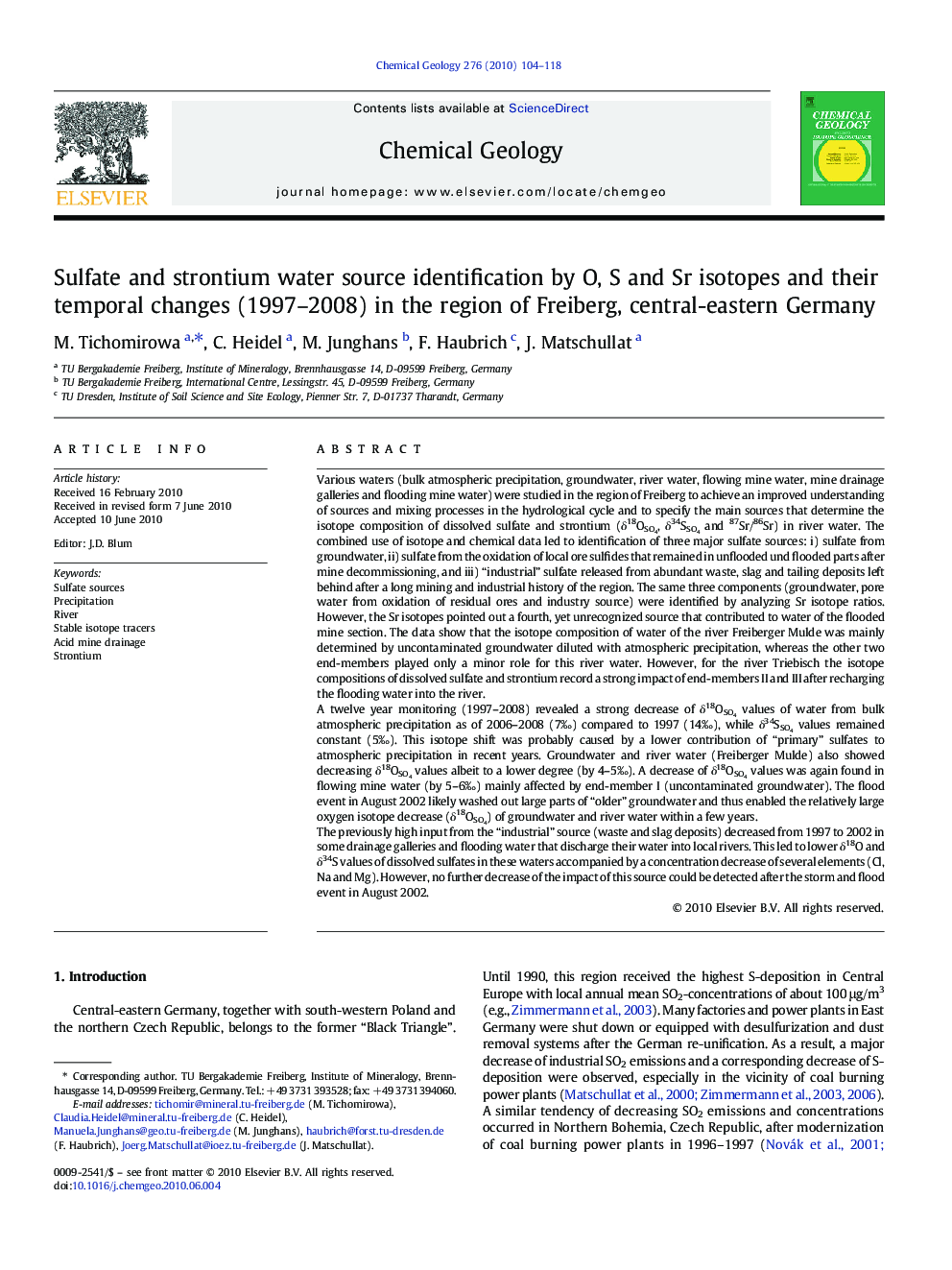| کد مقاله | کد نشریه | سال انتشار | مقاله انگلیسی | نسخه تمام متن |
|---|---|---|---|---|
| 4699927 | 1637684 | 2010 | 15 صفحه PDF | دانلود رایگان |

Various waters (bulk atmospheric precipitation, groundwater, river water, flowing mine water, mine drainage galleries and flooding mine water) were studied in the region of Freiberg to achieve an improved understanding of sources and mixing processes in the hydrological cycle and to specify the main sources that determine the isotope composition of dissolved sulfate and strontium (δ18OSO4, δ34SSO4 and 87Sr/86Sr) in river water. The combined use of isotope and chemical data led to identification of three major sulfate sources: i) sulfate from groundwater, ii) sulfate from the oxidation of local ore sulfides that remained in unflooded und flooded parts after mine decommissioning, and iii) “industrial” sulfate released from abundant waste, slag and tailing deposits left behind after a long mining and industrial history of the region. The same three components (groundwater, pore water from oxidation of residual ores and industry source) were identified by analyzing Sr isotope ratios. However, the Sr isotopes pointed out a fourth, yet unrecognized source that contributed to water of the flooded mine section. The data show that the isotope composition of water of the river Freiberger Mulde was mainly determined by uncontaminated groundwater diluted with atmospheric precipitation, whereas the other two end-members played only a minor role for this river water. However, for the river Triebisch the isotope compositions of dissolved sulfate and strontium record a strong impact of end-members II and III after recharging the flooding water into the river.A twelve year monitoring (1997–2008) revealed a strong decrease of δ18OSO4 values of water from bulk atmospheric precipitation as of 2006–2008 (7‰) compared to 1997 (14‰), while δ34SSO4 values remained constant (5‰). This isotope shift was probably caused by a lower contribution of “primary” sulfates to atmospheric precipitation in recent years. Groundwater and river water (Freiberger Mulde) also showed decreasing δ18OSO4 values albeit to a lower degree (by 4–5‰). A decrease of δ18OSO4 values was again found in flowing mine water (by 5–6‰) mainly affected by end-member I (uncontaminated groundwater). The flood event in August 2002 likely washed out large parts of “older” groundwater and thus enabled the relatively large oxygen isotope decrease (δ18OSO4) of groundwater and river water within a few years.The previously high input from the “industrial” source (waste and slag deposits) decreased from 1997 to 2002 in some drainage galleries and flooding water that discharge their water into local rivers. This led to lower δ18O and δ34S values of dissolved sulfates in these waters accompanied by a concentration decrease of several elements (Cl, Na and Mg). However, no further decrease of the impact of this source could be detected after the storm and flood event in August 2002.
Journal: Chemical Geology - Volume 276, Issues 1–2, September 2010, Pages 104–118